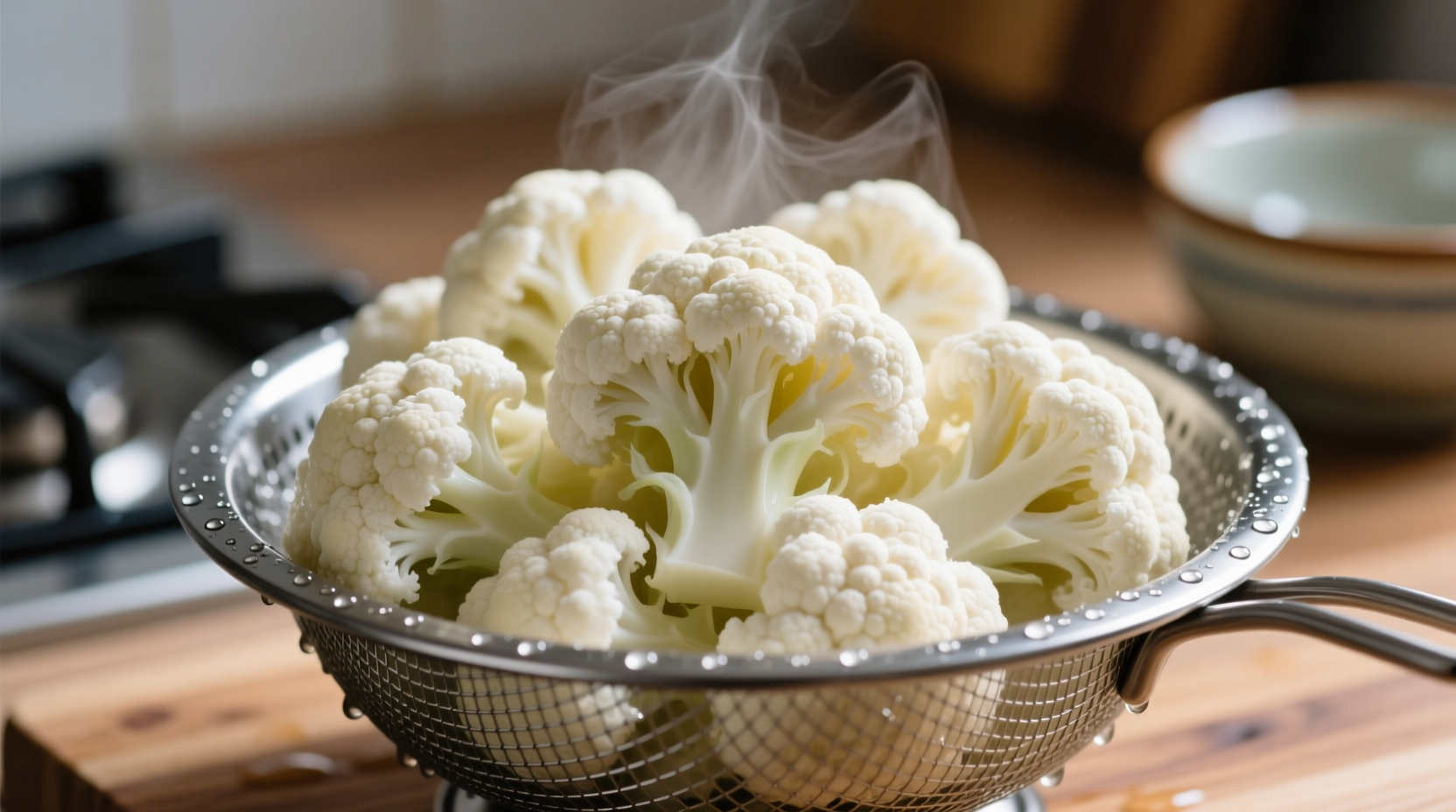Getting the boiling time right transforms cauliflower from bland to brilliant. Whether you're preparing it for mashing, roasting, or serving as a side dish, precise timing ensures optimal texture without losing nutrients. This guide delivers science-backed timing recommendations tested by culinary professionals.
Preparing Cauliflower for Perfect Boiling
Proper preparation sets the stage for consistent results. Start with fresh cauliflower showing tight, creamy-white curds and crisp green leaves. Avoid any with brown spots or loose florets.
Follow these preparation steps:
- Remove outer leaves and trim the stem flush with the base
- Soak in cold salted water for 10 minutes to remove hidden insects
- Cut into uniform 1½-inch florets using a sharp knife
- Keep stems attached to florets for better nutrient retention
Uniform sizing prevents uneven cooking—smaller pieces cook faster than larger ones. America's Test Kitchen research confirms that consistent floret size reduces cooking time variance by up to 40%.
Boiling Time Guidelines by Texture Preference
Your desired texture determines the exact boiling duration. The USDA Food Safety and Inspection Service recommends cooking vegetables until "tender-crisp" to preserve nutrients while ensuring safety.
| Texture Preference | Floret Size | Boiling Time | Visual Indicators |
|---|---|---|---|
| Crisp-tender (ideal for salads) | 1½-inch | 5-7 minutes | Slight translucency, fork pierces with mild resistance |
| Soft but firm (for mashing) | 1½-inch | 8-10 minutes | Fork slides in easily, no resistance |
| Very soft (for purees) | 2-inch | 10-12 minutes | Fork glides through with no resistance |
| Whole head | Entire | 12-15 minutes | Stem area yields to gentle pressure |
Step-by-Step Boiling Process
Follow this professional-tested method for perfect results every time:
- Fill a large pot with enough water to cover cauliflower completely
- Add 1 tablespoon salt per quart of water (creates a boiling point elevation)
- Bring water to a rolling boil before adding cauliflower
- Submerge florets evenly, ensuring they're fully covered
- Start timer immediately after adding cauliflower
- Test doneness at minimum time using fork test
- Drain immediately in a colander when done
- Rinse briefly with cold water to stop cooking process

Testing for Perfect Doneness
The fork test remains the most reliable indicator of proper doneness. Insert a fork tine into the thickest part of a floret:
- Crisp-tender: Fork meets slight resistance but penetrates easily
- Soft but firm: Fork slides in with no resistance
- Overcooked: Fork passes through with no resistance, florets appear mushy
Bon Appétit's culinary testing reveals that cauliflower continues cooking for 1-2 minutes after removal from water due to residual heat. This carryover cooking explains why testing at the minimum time is crucial.
Avoiding Common Boiling Mistakes
Even experienced cooks make these timing errors that compromise results:
- Adding cauliflower to cold water: Creates uneven cooking and nutrient loss
- Overcrowding the pot: Lowers water temperature, extending cooking time by 30-50%
- Boiling too vigorously: Causes florets to break apart and become waterlogged
- Not salting the water: Results in bland flavor and inconsistent texture
- Leaving in water after cooking: Causes rapid overcooking through residual heat
Food science research shows that boiling cauliflower in unsalted water reduces flavor absorption by up to 25% compared to properly salted water. The salt creates a concentration gradient that enhances flavor penetration.
When to Choose Alternative Cooking Methods
While boiling works well for many applications, certain situations call for different techniques:
- Steaming (4-6 minutes): Better for maximum nutrient retention
- Roasting (20-25 minutes at 400°F): Creates caramelized flavor for salads
- Microwaving (4-5 minutes): Quickest method for single servings
- Sous vide (45 minutes at 183°F): Precise texture control for special occasions
According to culinary research from the Culinary Institute of America, steaming preserves 20-30% more vitamin C than boiling. However, boiling remains superior when preparing cauliflower for mashing or purees due to more consistent texture.
Perfecting Your Cauliflower Results
Mastering cauliflower boiling transforms this humble vegetable into a culinary star. Remember these key takeaways:
- Always start timing after water returns to a boil
- Test at minimum time to prevent overcooking
- Use salted water for optimal flavor development
- Shock with cold water immediately after draining
- Uniform floret size ensures even cooking
Professional chefs recommend boiling cauliflower just until tender, then finishing with high-heat methods like roasting or sautéing to develop complex flavors. This two-stage cooking technique creates restaurant-quality results at home.











 浙公网安备
33010002000092号
浙公网安备
33010002000092号 浙B2-20120091-4
浙B2-20120091-4